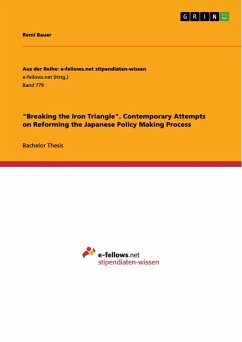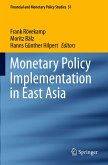Bachelor Thesis from the year 2010 in the subject Economics - Case Scenarios, grade: 1,1, Cologne Business School Köln, course: East Asia Management, language: English, abstract: On August 30, 2009, Lower House elections for the bicameral Diet were held in Japan where the DPJ, short for Democratic Party of Japan, achieved a landslide victory. Never before has the opposition party in Japan reached such a clear success in becoming the new ruling party of Japan and making the thus far dominant Liberal Democratic Party, abbreviated as LDP, the new opposition. As the newly elected government argues that the Iron Triangle Model, which dominates Japanese policy making processes, is outdated and proposed plans on how to reform it, new discussions about this post-war concept arose. Thus, this paper will deal with the following questions. In how far has the Iron Triangle Model been reformed in the recent years? Is Japan shifting away from this post-war model and, what, if anything, has been achieved by contemporary reforms? In how far are the reform attempts of former Prime Minister Koizumi and Prime Minister Hatoyama similar to each other? The goal of the paper is to answer these questions while also giving a diligent insight and thorough understanding of the Iron Triangle Model. Moreover, this model for Japanese policy making and its up-to-dateness will be rated. For answering these research questions, not only the newly proposed plans of the Democratic Party of Japan are to be elaborated and evaluated, but also the contemporary reform attempt of Koizumi Jun'ichir , which started in 2001, is to be explained. While most scientific analyses and traditional studies tended to focus almost exclusively on either Prime Minister Koizumi's or Prime Minister Hatoyama's reform attempts in economic as well as institutional terms, this paper spotlights on a juxtaposition of Koizumi Jun'ichir and Hatoyama Yukio's institutional reforms. The reform attempts will be compared andevaluated based on scientific journals and research papers that solely focus on one of the actors or specific topics discussed in this analysis combining their findings. Also, official government information, publications by political parties and data from textbooks will deliver theoretical background and additional insight. The theory applied to solve the research question is the Iron Triangle Model, which characterizes Japanese policy making throughout the post-war era. An in-depth evaluation of the model, the actor's roles as well as the reform attempts themselves will be executed to present a sound juxtaposition.








